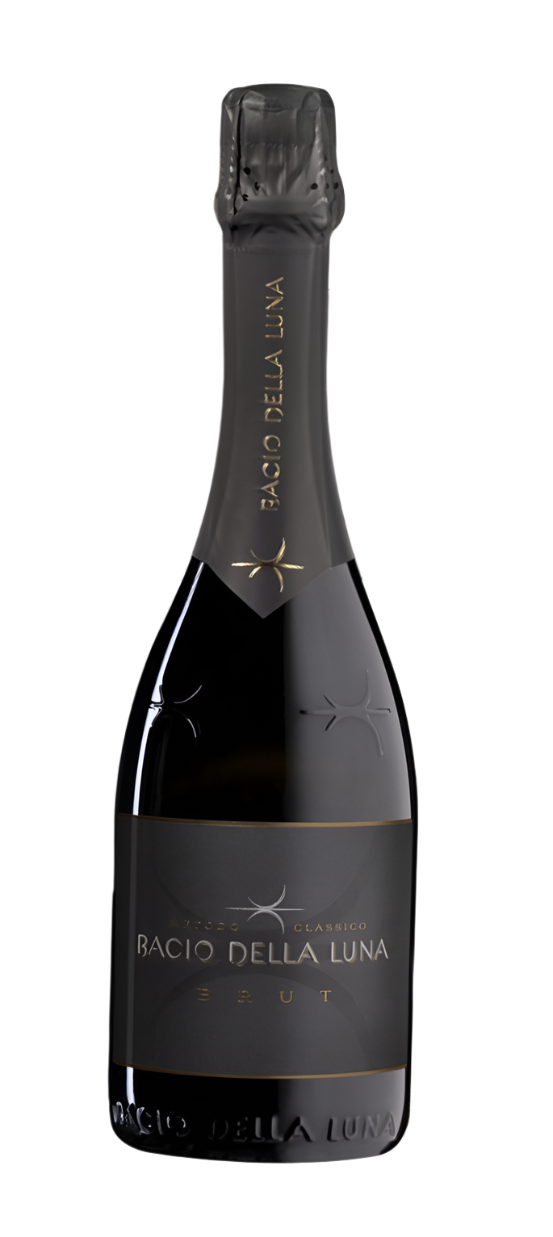1
/
of
1
Bacio Della Luna Classico Spumante Brut - NV (750ml)
Bacio Della Luna Classico Spumante Brut - NV (750ml)
Regular price
$9.99
Sale price
$9.99
Regular price
$16.99
Unit price
/
per
The base wine is a cuvée exclusively obtained from Chardonnay grapes harvested in the Adige Valley, the ideal area of this Italian excellence both for environment and climate.
The perfect acidity of our Classic Method comes from the vineyards located at the valley floor. Minerality and sapidity are the result of the micro terroirs located at medium altitude and composed by dolomitic and volcanic sediments. The final touch? The
addition of the “liqueur d’expédition”, the true secret from the knowledge and experience of our winemakers.
Share :

- varietal
- Region
- Sub - Region
- Type
- Reviews
Muscat was one of the first grapes to be identified and cultivated and is, more accurately speaking, the name given to the family of four main sub-varieties. The most important is Muscat Blanc a Petits Grains and Muscat of Alexandria. Due to the high level of Monoterpenes they are almost unique in producing wines with a distinctively grapey and musky aroma. Muscat Blanc is fast becoming one of the world’s most popular light-skinned varieties making the Moscatel’s of Spain and Moscato’s of Italy. These wines are typically very fragrant and low-alcohol, sweet, sparkling wine. The grape is also grown in France, making bone-dry whites in Alsace and sweet fortified ‘Vins doux naturels’ in the hotter climes in south of the country. In Australia, it is the darker hued Muscat of Alexandria which forms the countries finest liqueur Muscats, delivering unctuous aromas of citrus peel and sweet spice. Good examples come from Barossa and Rutherglen Valley.
Along with Tuscany, Piedmont is responsible for most of Italy’s greatest wines. Here, Nebbiolo is the king of grapes with the DOCGs of Barolo and Barbaresco supplying a significant amount of the finest examples. Less expensive, but good value Nebbiolos are made within the larger Langhe DOC which Barolo and Barbaresco are both situated in. Barbera and Dolcetto are the region's other important red grapes. Moscato (Muscat) is the most popular white grape, most of which gets used in making Spumante and Frizzante (semi-sparkling) wines, notably those made in and around the town of Asti. Meanwhile, the region's most popular still white wines are made from Cortese and Arneis. Cortese are mostly made in the province of Alessandria and go by the name Gavi, while Arneis is mainly cultivated in Roero, just north west of Alba.
A town and subregion of south east Piedmont and also the name of the sparkling white wine it, along with its larger neighbouring provinces; Cuneo and Alessandria, produces. While the region makes a range of light red wines from native varieties including Barbera, Dolcetto and Gignolino to name a few, it is the Moscato Bianco (Muscat Blanc a Petits Grains) grape that is of most commercial importance.
The region produces two differing styles of sparkling, Asti Spumante and Moscato d'Asti. Asti Spumante indicates a fully sparkling off dry style, which is now just referred to as Asti. The spumante was dropped out of its name when it was elevated to DOCG status in 1993 in an attempt by producers to differentiate itself from other regions who also included Spumante in the name of their sparkling wine. Moscato d'Asti is Asti's frizzante (semi-sparkling), sweeter and lower alcohol cousin, typically made with the ripest and healthiest grapes.
Unlike Champagne where a second fermentation is carried out in order to make the wine sparkling, Asti and Moscato d'Asti acquires its carbonation during its one and only fermentation in stainless stell tanks. Asti is normally fermented to 7-9.5% abv Asti's and Moscato d'Astis to 5-5.5% abv. Asti's are prized for their pronounced youthful and exotic fruit forward aroma and are therefore generally non vintage, intended for drinking very young.
The wines are normally served chilled in Champagne flutes and while quite high in residual sugar good examples will have enough acidity to make them compatible with a range of sweet and savoury dishes.
Sparkling wine is a wine with high levels of carbon dioxide in it making it bubble. The carbon dioxide is a result of natural fermentation, either in a bottle or a specially designed tank, or as a result of carbon dioxide injection.
Sparkling wine is usually white or rosé but there are many examples of red sparkling wines. The sweetness of sparkling wine can range from very dry "brut" styles to sweeter "doux" varieties.
When one thinks of sparkling wine they usually think of Champagne, but this wine is exclusively produced in the Champagne region of France and many sparkling wines are produced in other countries and regions. Most countries reserve the word Champagne for a specific type from the Champagne region of France. The French terms "Mousseux" or "Crémant" are used to refer to sparkling wine not made in the Champagne region. German and Austrian sparkling wines are called Sekt. The United States is a significant producer of sparkling wine with producers in numerous states. Recently the United Kingdom, which produced some of the earliest examples of sparkling wine, has started producing sparkling wines again.


